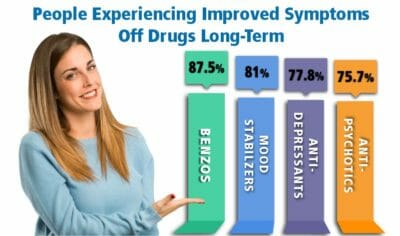What was Percocet Used for?
Oxycodone compound drugs like Percocet are pain relief medications for moderate to moderately severe pain. Typically, the common prescription dosage is to give one tablet every 6 hours for the relief of continuous pain.
OxyContin was a continuous release form of single ingredient oxycodone to be given once every 12 hours and was discontinued in 2012. Generic OxyContin was later replaced by another oxycodone drug, OxyNeo.11,12
Recreationally, oxycodone products have been used for their euphoric effects, similar to or stronger than other opiates such as morphine or heroin.
Percocet© is the brand name for the combination of the synthetic opioid called oxycodone and acetaminophen, a non-opioid pain reliever that is also found in over-the-counter pain relief products such as Tylenol©. Oxycodone has a similar structure and also similar addictive characteristics to morphine. Like all opiates and other combined opioid analgesic medications, Percocet, now sold only as a generic product, is a CNS depressant that slows down the respiratory system and also heart rate and causes euphoric, relaxed sensations.
Both Percocet and OxyContin have been the subjects of much concern with a soaring number of persons struggling with addiction to these drugs, and also the rising number of overdoses and deaths. In 2013, the drugmaker of a drug similar to Percocet reformulated Vicodin to contain a maximum of 300mg acetaminophen per pill, to prevent liver damage associated with higher doses. According to the most recent FDA label information for Percocet, the company still makes a version of Percocet with higher levels of acetaminophen than advised by the FDA, but also makes a 325mg acetaminophen product as well.5,6
According to government statistics, prescription opiates including drugs like Percocet, Vicodin, OxyNeo, and their genetic equivalents, are the leading cause of recent drug overdose deaths, and the death rate continues to climb.1
Risks of Combining Percocet with Other CNS Depressants
When two or more CNS depressants such as Percocet and alcohol are taken together, the additive depressant effects can lead to respiratory collapse or coma, requiring immediate medical intervention. The Good Samaritan Law allows people to assist others amidst a medical emergency; in effect, creating a liability-free option in preventing overdose and death. The law applies to each state in the US and in many countries around the world. There are no longer any legal ramifications in calling 9-1-1 to request emergency medical help for a person in an overdose situation.
In addition to the risks of addiction, overdose, and death from generic Percocet use, there is also an associated health concern regarding the effects of long-term use of acetaminophen leading to renal impairment and ALF (acute liver failure) as well as significant liver damage. The leading cause of ALF is linked to synthetic analgesic opioid medications such as Percocet, Lortab©, Vicodin©, etc.2
Before starting or stopping a drug containing acetaminophen, such as generic Percocet, becoming as knowledgeable as possible about side effects, health risks, and withdrawal symptoms can help to make the most informed decision possible for you or a loved one’s health and safety.
Percocet (oxycodone) Alternative Names and Slang
Percocet, oxycodone, and OxyContin all developed a significant street presence as these drugs share a high risk for addiction. On the street, these may be referred to by nicknames, such as Percs, C, Oxy’s, OX, OC, Blues, Kickers, Hillbilly heroin, 40s, and 80s (OxyContin 40mg/80 mg pills).
Purdue, the makers of OxyContin started plans to reformulate the drug as early as 2011, to make it harder to crush and dissolve. The new formulation was renamed OxyNeo. OxyContin was banned in several countries, but until as recently as February of 2018 OxyContin was still being sold abroad. Purdue has now stated it will stop making the drug. But other drug companies may not be as willing to stop the lucrative production and sale of such medications around the world.3,4,11
The greatest key to health is education, which will give a person the understanding of how to avoid personal medical tragedies despite disingenuous or even illegal marketing practices by over-reaching drug companies.
Percocet (oxycodone) Side Effects
A person taking oxycodone products like generic Percocet experiences pleasurable euphoric side effects, a false sense of well-being, no pain, and profound relaxation.
Other possible side effects include:
- Nausea
- Vomiting
- Unusual dreams or nightmares
- Rash, reddened skin, hives, itching, flushing
- Sore throat
- Fever
- Blurred or double vision
- Mental fog or confusion
- Dizziness especially when rising from a seated or lying position
- Hallucinations
- Loss of appetite
- Agitation, nervousness, restlessness
- Difficulty urinating, painful urination
- Back pain or pain in the side
- Yellowed eyes or skin
- Pale, clay-like stools
- Dark urine
- Dry mouth
- Twitches, muscle stiffness
- Anxiety
- Mood swings
- Fatigue, tiredness, drowsiness
- Loss of motor or muscle control
- Weakness
Discontinuing/Quitting Percocet (oxycodone products)
If you have been taking generic Percocet or a similar drug containing hydrocodone for an extended period of time, gradual tapering eases the intense withdrawals. Seek medical advice before suddenly stopping opiate drugs including generic Percocet.
Some persons may prefer to opt for inpatient help as the withdrawals can be near impossible to endure without assistance. There are many ways to ease the process, such as a short course of bridge medications to ease these profoundly uncomfortable withdrawals. More information on withdrawal management is given below in the section called “Treatment.”

 First, we
First, we 







